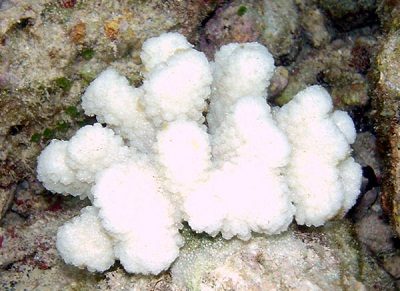
Researchers from University of New South Wales in Australia are trying to create a superalgae using genetic engineering technique to protect world’s coral from bleaching. According to researchers, they have identified genes in micro-algae Symbiodinium (zooxanthellae) found in corals and it would now be used to protect corals from bleaching. Scientists say they would use genetic engineering techniques to increase the stress tolerance of these micro-algae to ocean warming.
Symbiodinium are a genus of primary producers found in corals. Through photosynthesis, these micro-algae produce molecules that feed the corals. By consuming these molecules, corals grow and form coral reefs. In this way, corals enjoy a symbiotic relationship with Symybiodinium as corals provide a safe home for the algae.
Corals are vital for the good health of reefs and oceans. Coral reefs make the most diverse marine habitats in the world. According to an estimate from the International Coral Reef Initiative, the coral reefs in the whole world provide a total net benefit of $29.8 billion. This includes $9.6 billion from tourism and recreation activities, $9.0 billion from coastal protection, $5.7 billion from fisheries, and $5.5 billion from biodiversity. However, for the past few years, a huge increase in coral bleaching has been observed in oceans, especially in the Great Barrier Reef. According to scientists, increase in ocean temperatures is one of the major reasons of coral bleaching as it harms Symbiodinium. While mildly bleached corals can recover if the temperature drops, severely bleached corals eventually die. Some climate change models even predict that if ocean temperatures continue to rise, coral reefs will be eradicated by the end this century. The new research however could prevent coral bleaching.
Australian scientists have found that different species of Symbiodinium have different levels of thermal tolerances. In this research, scientists used sequencing data from Symbiodinium to develop the first, tailored genetic engineering framework to be applied to Symbiodinium to improve their stress tolerance.
According to Rachel Levin from The University of New South Wales, Australia, there is very little information available about Symbiodinium.
“Symbiodinium is very biologically unusual, which has made it incompatible with well-established genetic engineering methods,” said Levin.
“We therefore aimed to overcome this roadblock by conducting novel genetic analyses of Symbiodinium to enable much needed research progress,” she said.
The researchers have now identified key Symbiodinium genes that could be targeted to prevent coral bleaching.
According to the team, the genetic engineering framework that they have developed needs to be comprehensively tested and optimised.
“If lab experiments successfully show that genetically engineered Symbiodinium can prevent coral bleaching, these enhanced Symbiodinium would not be immediately released onto coral reefs,” Levin added.
The detailed results of the study have been published in the journal Frontier in Microbiology.
